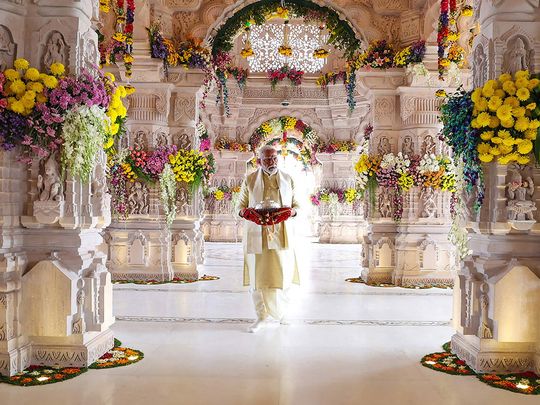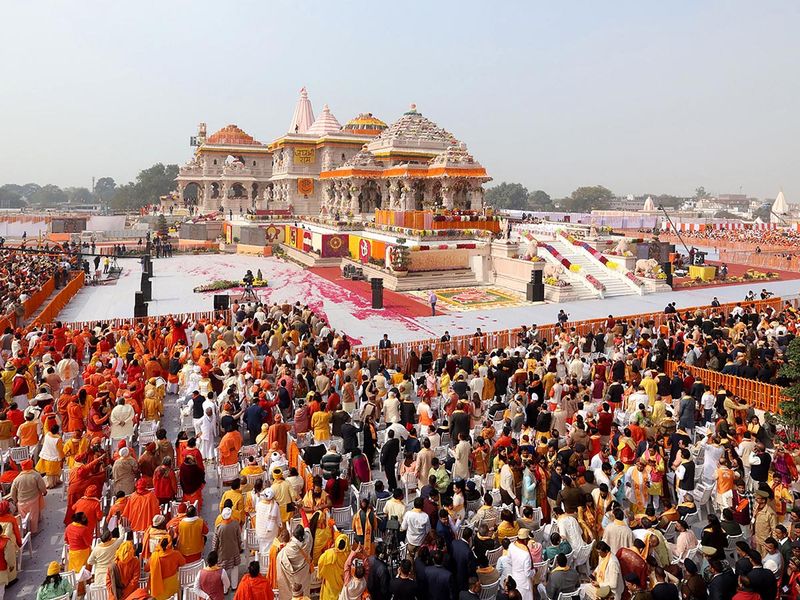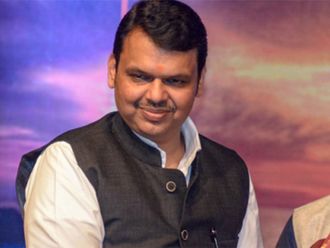
The pranpratishtha or consecration of the new Ram Mandir in Ayodhya on Jan. 22 is done but hardly dusted. The day after, over 300,000 pilgrims visited the shine. Not surprising. This is the Indian way when it comes to any spiritual congregation.
The Kumbh Mela, for instance, the mega gathering of the devout and curious, which takes place once in twelve years, attracts over 100 million visitors, with pilgrim footfalls exceeding 1 million most days.
Given its historic, cultural, religious — and yes — political significance, Ayodhya too is about totally to be transformed. From a tiny hamlet with a few broken down temples to one of the world’s most visited and vibrant sacred cities.
Why do I say this? Because I was there at the inauguration of the shrine on January 22. The prime minister of India, Narendra Modi, the governor of India’s largest state, Anandiben Patel, the state’s chief minister, Yogi Adityanath, and the spiritual head of the Rashtriya Swayamsevak Sangh, Mohanrao Bhagwat, along with a host of other ordinary and not so ordinary persons, participated in the rites.
Electrifying atmosphere
The atmosphere was electrifying, even ecstatic. India’s who’s who, from all major walks of life, were also present. I personally spotted India’s wealthiest couple Mukesh and Nita Ambani, most loved screen icon, Amitabh Bachchan, greatest cricketing genius, Sachin Tendulkar, and actress, Kangana Ranaut, among a host of other leaders, newsmakers, changemakers, and celebrities, all present and in attendance of the grand opening of Lord Rama’s temple.
For security reasons, we were seated in different zones, but everyone was there on the same humble footing, as an ordinary citizen and admirer of Lord Rama.
On the way to Ayodhya, the arrangements were immaculate. The roads were completely cleared of all traffic except the most essential. The state declared a holiday. Throughout the three hour road trip there were numerous security checks. Our bus too had a police escort.

A turning point
In fact, I myself was assigned an armed gunman, a personal security officer, which was a novel experience. He was a perfectly decent and personable young man, smart and polite, though carbine-totting. He was at my Lucknow hotel at 5:00am and never left till I was escorted back late in the evening.
The thought that went through my mind as we were heading towards the Ram Mandir was how the ruling Bharatiya Janata Party (BJP), but especially the Narendra Modi-Amit Shah duo and, in addition, Yogi Adityanath, the UP chief minister, have understood and exercised power in fashion never witnessed in independent India. Never since the British left has India witnessed state power demonstrated on such a scale before.
This is an additional sense in which the reclamation of Ayodhya is truly a turning point in the life of our republic. Not only from the religious or spiritual, but also from the point of view of statecraft and politics. More specifically, it was as if we had forgotten how to wield power responsibly.
Well forget about responsibly, but how to wield power at all. When it came to the temple project, the naysayers and doomsday cultists had grimly prophesied that the country would be torn apart by violence, rioting, and violence.
Nothing of that kind happened. Not evenly remotely close. The day passed not only peacefully, but joyously. Everywhere in Ayodhya and much of the rest of the country, there were celebrations, bhandaras or free feasts, and lamp lighting.
The Muslims of Faizabad, the big town nearby, said they were very happy with the huge influx of tourists. They were going to experience an unprecedented level of prosperity regardless of their business or profession. In fact, several hundred of the temple artisans and craftspeople were Muslims.
It made me think how the battle over Ayodhya was an alien import and imposition, brought to the disputed structure from outside. The local populace had no major problem with the temple.
In fact, the Babri Masjid itself, had never been a functioning mosque in living memory. The wrongs of history cannot be righted by contemporary acts of retaliation or vengeance, but some sense of balance and proportion are also required.
The Ram Temple is the symbol of an unprecedented collaboration and cooperation not only between state and civil society, but also of private philanthropy and voluntary teamwork. Right from the design to its execution, hundreds of thousands of people all over India offered their time, talent, and resources to make this dream come true.
Narendra Modi has understood and exercised power in fashion never witnessed in independent India. Never since the British left has India witnessed state power demonstrated on such a scale before.
A sea of humanity
The temple has proved that the demonisation of political Hinduism and Hindu power was mistaken, if not malicious. Such were the thoughts going through my mind as witnessed the grand event. I snapped out of my reverie as the ceremonies came to an end. Looking around, I saw that no eye was dry.
Personally, I felt uniquely blessed and elevated too. My heart was full. of A felt a heightened sense piety and uplifted consciousness. The forces of the universe, it would seem, conferred so much unexpected grace upon me. All totally undeserving for a person such as myself.
I cannot bring myself to describe how I felt as I entered the sanctum sanctorum. It was as if all the expectant devotees lost their individuality and became a sea of humanity. I prayed that my ego should also end, that I should try to be more accepting of others, more able to serve not just my fellow humans, but the whole cosmos.
The confusion after the darshan (sacred sighting), inevitable after the exit of the VVIPs, was offset by shining faces of the common citizens.
As I caught the last flight out of Lucknow, reaching Delhi after 1:00 AM, I felt calm, fulfilled, and deeply grateful.











